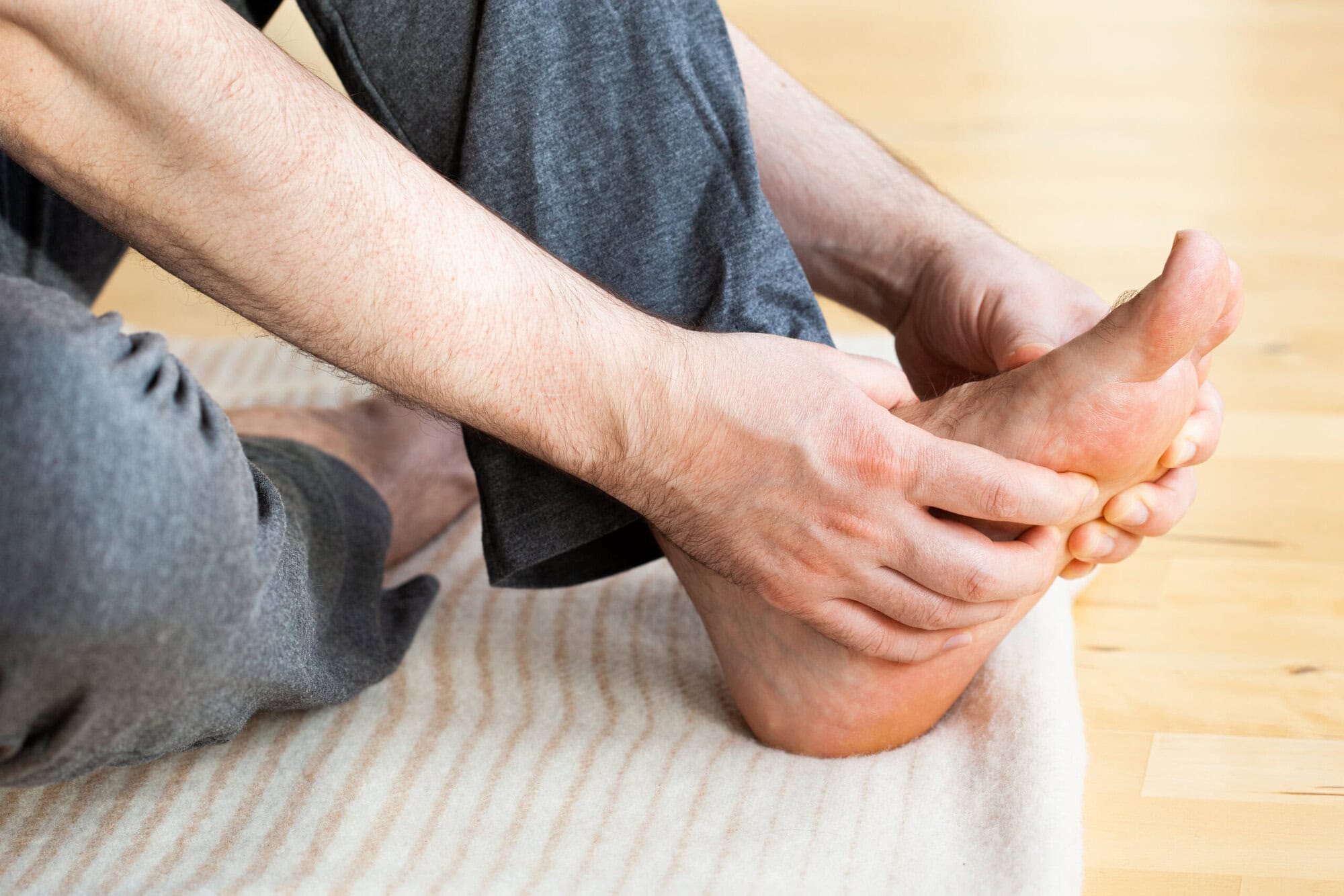Foot arch pain can be a frustrating, nagging issue that impacts how you move through the world. It might make your morning walks uncomfortable or keep you from standing comfortably at your job. And while plantar fasciitis is a well-known cause of arch pain, it’s far from the only one.
If you’ve been told your pain isn’t plantar fasciitis, you might feel unsure of what to do next. The good news? There are other explanations, and physical therapy can help you get to the root of the issue.
This article explores common causes of foot arch pain that aren’t plantar fasciitis and how working with a licensed physical therapist can help relieve discomfort and restore confidence in your movement.
What is foot arch pain?
The arch of your foot plays an important role in absorbing shock, supporting your body weight and maintaining balance. Arch pain can feel different for everyone. It might show up as a dull, nagging ache, a sharp twinge when standing, or a burning sensation after long periods on your feet. You might notice it most in the morning, during exercise or when walking barefoot on hard surfaces.
Accurately identifying the cause of foot arch pain is essential because each condition responds to treatment differently. Misdiagnosis can delay recovery and even lead to additional issues.
Common causes of foot arch pain that aren’t plantar fasciitis
Several conditions can cause pain in the arch that may mimic or be mistaken for plantar fasciitis. Here are some of the most common:
1. Posterior tibial tendon dysfunction (PTTD)
This condition has been renamed progressive collapsing foot deformity (PCFD). It occurs when the tendon that supports the arch becomes overstretched or damaged. Over time, the arch may flatten, leading to instability and discomfort.
Symptoms:
- Pain or swelling on the inside of the ankle
- A noticeable flattening of the foot
- Difficulty standing on tiptoe
PCFD is more common in adults over 40, people with obesity or high activity levels, and those with existing flatfoot.
2. Adult-acquired flatfoot
Flatfoot doesn’t always cause pain, but for some, it can lead to fatigue, swelling and aching in the arch area. Adult-acquired flatfoot can develop gradually, often from tendon damage (such as PCFD).
Key indicators:
- Arch collapse over time
- Feet pointing outward (“too many toes” sign)
- Uneven wear on shoes
3. Stress fractures
Small cracks in the bones of the foot (often the navicular or metatarsals) can develop due to repetitive stress, especially in runners or active individuals. These are often missed without imaging.
Typical symptoms:
- Pain that worsens with weight-bearing activity
- Tenderness in a specific area of the foot
- Swelling
4. Tarsal tunnel syndrome
This nerve condition involves compression of the posterior tibial nerve as it travels through the tarsal tunnel near the ankle.
Common signs:
- Tingling, burning or numbness in the arch or sole
- Pain that worsens at night or with activity
- Sensitivity to touch
Tarsal tunnel syndrome can be mistaken for plantar fasciitis, but it has a neurological component that requires a different treatment approach.
5. Midfoot arthritis
Degenerative changes in the joints of the midfoot can cause chronic stiffness and pain in the arch. Arthritis in this region may result from age, overuse or previous injury.
Symptoms include:
- Aching pain in the middle of the foot
- Difficulty with push-off during walking
- Stiffness in the morning
6. Tendinitis
Other tendons in the foot can also become inflamed, such as the flexor hallucis longus (which helps flex the big toe) or the peroneal tendons (which stabilize the outside of the foot). These can lead to pain that radiates to the arch.
How a physical therapist can help
If your pain isn’t responding to home remedies or rest, a physical therapist can provide a customized, expert-guided plan to help you feel better.
Comprehensive evaluation
At Forever Fit, licensed physical therapists begin with a thorough evaluation of your posture, gait, mobility and strength. Understanding your body’s movement patterns is key to identifying the true cause of arch pain.
Your PT may perform:
- Gait analysis
- Footwear assessment
- Strength and flexibility tests
- Functional movement screens
Personalized treatment plan
Once the source of your pain is identified, your therapist will build a plan to target the underlying issue.
Treatment techniques they may include in your plan are:
- Manual therapy to reduce protective tension and restore mobility
- Targeted strengthening and stretching to support the arch and surrounding structures
- Gait retraining to correct biomechanical faults
- Recommendations for orthotics if needed
Patient education and empowerment
You’ll also learn strategies to manage your pain and improve your movement long term. This includes applying the PEACE & LOVE principles:
- Protection of injured tissue
- Elevation to reduce swelling
- Avoid anti-inflammatories early in healing
- Compression to support the area
- Education on proper movement and self-care
- Load progression based on pain tolerance
- Optimism to support emotional resilience
- Vascularization through gentle aerobic activity
- Exercise tailored to your goals
When to seek help
It’s time to see a physical therapist if:
- Your pain has lasted longer than 1–2 weeks
- It’s interfering with your daily life or activity level
- You notice swelling, changes in foot shape or numbness
Early intervention can help you avoid long-term dysfunction and reduce the risk of compensatory issues in the knees, hips or back.
Arch pain FAQs
Is arch pain always caused by plantar fasciitis?
No. While plantar fasciitis is common, several other conditions can cause similar symptoms. Getting the correct diagnosis is essential.
Can arch pain go away on its own?
Sometimes mild pain improves with rest and footwear changes. But if it persists, worsens or limits activity, physical therapy is recommended.
Do I need surgery for arch pain?
Surgery is rarely the first option. Most causes of arch pain can be treated conservatively with PT, rest and lifestyle modifications.
Can physical therapy help even if I’ve had pain for a long time?
Yes. Chronic pain can still respond well to treatment, especially when it’s targeted and progressive.
Start getting the help you need for foot arch pain at Forever Fit
Foot arch pain can be discouraging, but it doesn’t have to control your life. If you’ve been told your pain isn’t due to plantar fasciitis, you still have options. Physical therapy offers a path to relief that doesn’t rely on surgery or long-term medication use. With the right diagnosis and support, many people return to their favorite activities feeling stronger and more confident than before.
Our team is here to help you take control of your body again! Call us today or fill out our online appointment request form to get started.

